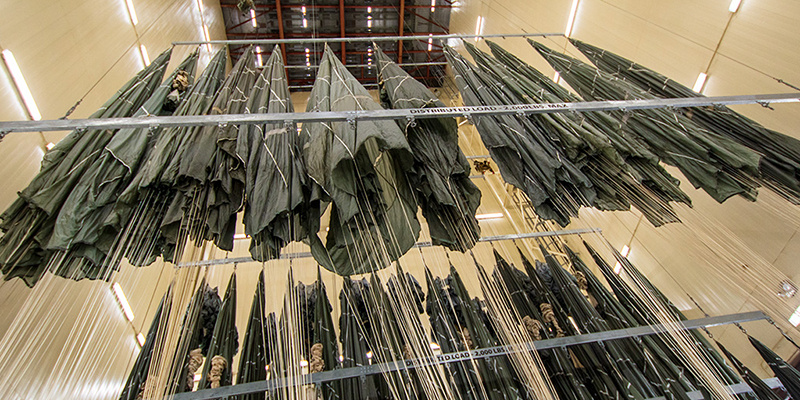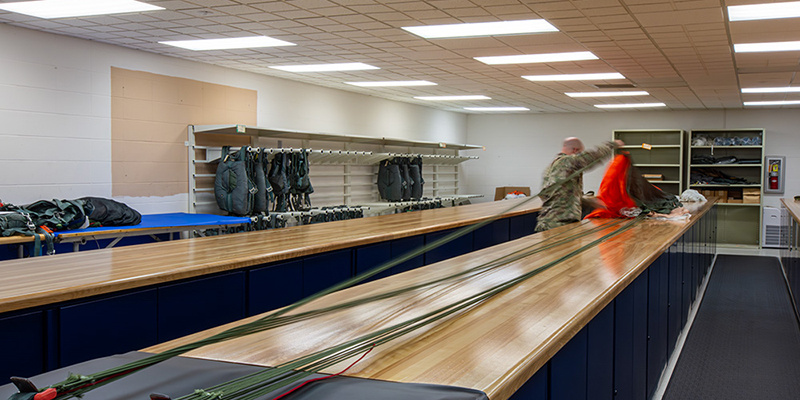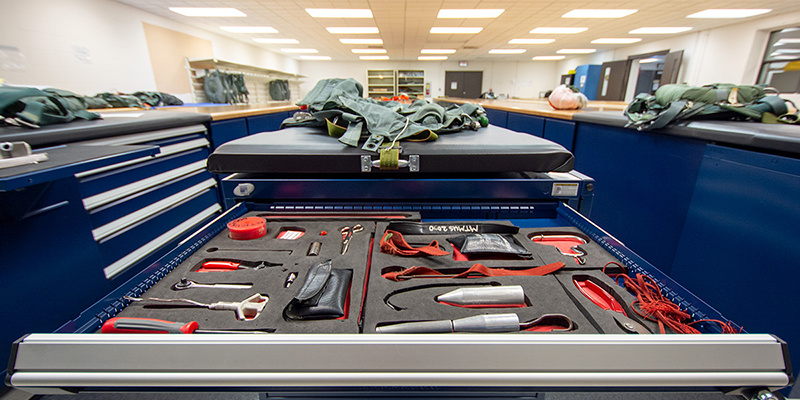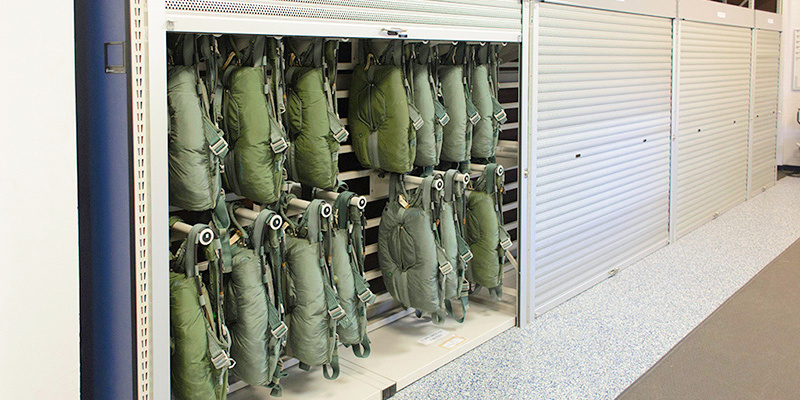When you think about bravery, it's hard to overlook the courage of those willing to jump out of airplanes - especially when they're paratroopers in the United States military. These highly trained individuals leap into challenging, even hostile, environments, relying on military parachutes to ensure their safety.
At Patterson Pope, we take pride in supporting the U.S. military with innovative storage solutions tailored to their precise needs. Among our most essential services is ensuring the safe handling, storage, and management of military parachutes, which are vital to successful missions and the safety of the brave soldiers who use them.
Precision and Expertise in Parachute Solutions
Working on military installations requires the utmost precision. From military parachutes to any of the varied equipment necessary for operations, attention to detail is paramount. Ken Stone, one of our experienced sales representatives, emphasizes that the military’s para-rigging guidelines leave no room for error.

“They’ve got very specific ways of doing things in these para-rigging areas. They’re packing personnel chutes and there’s simply no room for error,” says Stone. “Someone certified to pack parachutes — called a parachute packer or parachute rigger — goes through very rigorous training to get their certification. They are always looking for ways to do things more efficiently, save time, and reduce the chance for errors.”
The responsibility of a parachute packer cannot be overstated. These enlisted men and women are specially trained and licensed to pack, maintain, repair, and store parachutes, ensuring their readiness for the next mission.

Key Stages of Military Parachute Management
A military parachute's primary job is safely delivering equipment and troops from aerial transport to the ground. In military vernacular, a chute opening is called a "pop." But it's what happens after each pop that makes the next one possible. Properly managing military parachutes involves three critical stages: drying, folding/packing, and storage.
Parachute Drying
When parachutes return from the field, they often carry debris such as leaves, insects, and even snakes. Many military facilities have tall metal parachute towers to lift the parachutes, shake out debris, and dry the chutes with hot air blowers. Patterson Pope partners with ParaDry to offer state-of-the-air hoist systems that make this process easy and dependable.
Parachute Folding and Packing
Virtually all parachute folding and packing is still done manually, requiring the skill of expert parachute packers. Given the various sizes, weights, and materials of military chutes, each must be meticulously inspected, folded, and packed.
"We always recommend using solid packing tables — no seams," notes Jane Glass Waldron, another of our military solutions experts. "Using a flat, seamless surface is the best way to ensure that no part of the chutes ever gets caught up on edges or sharp corners. That kind of thing can lead to tears and rips. Those can be dangerous, no matter how small."

The number of parachute packing tables a military installation requires depends on several factors. While most might need only a half dozen, installations like Ft. Bragg (home to the 82nd Airborne Division) and Ft. Benning (home to "Jump School") rely on dozens of packing tables to accommodate thousands of jumps each month, all requiring careful attention to detail by highly trained personnel.
Parachute Storage
Once packed, military parachutes must be safely stored or transported for future missions. Patterson Pope's parachute containers provide a secure, efficient solution. Designed with input from military personnel to ensure ease of use and durability, they feature heavy-duty steel construction and. the ability to stack up three units high. Personnel can easily load and unload the containers into storage areas or onto flatbed trucks with the help of a forklift – all without the fear of collapse or other damage.
For longer-term storage, our military parachute racks are designed with cantilever arms that adjust horizontally and vertically to accommodate parachutes of different sizes. You can then integrate these racks into high-density mobile storage units to maximize floor space and ensure quick access when needed.

Tailored Solutions for Unique Needs
No two military installations have the exact same requirements. At Patterson Pope, we work closely with each facility to customize solutions based on the unique needs of the personnel and the types of chutes they're using.
"There are a wide range of situations we encounter and many types of parachutes," says Bob Tyler, another experienced Patterson Pope storage specialist. "We customize our solutions based on the customer's needs. Some units don't need a 48- or 50-foot packing table – depending on the chute they're packing. We modify our solutions based on the requirements of the individual unit."
Supporting the U.S. Military
Our commitment to the U.S. military extends beyond simply offering products. We have proudly provided para-rigging solutions to military installations like Moody AFB (GA), Hurlburt Field (FL), Duke Field (FL), Ft. Benning (GA), and Ft. Bragg (NC). Our work ensures these brave men and women have the equipment and storage solutions necessary to perform their duties safely.
"We're here to support the entire process," adds Bob Tyler. "From packing, transportation, tracking, or even storage through vertical carousels, Spacesaver mobile systems, or static racking. We're proud to offer the innovation that really makes a difference. We even provide CTKs (consolidated tool kits) for each packing lane, ensuring everything they need is at their fingertips."
"When we design products, it's all based on how someone will use it," he says. "A lot of people in the industry look like they're trying to copy what we've already done. However, there is a lack of knowledge as to why certain things were done a certain way, and that's a valuable piece of the puzzle. Our solutions are unique to the user and unique to the field. And that makes a difference in the field."
When it comes to military parachutes, there's no room for compromise. That's why we proudly offer turnkey para-rigging solutions that make a real difference.

















